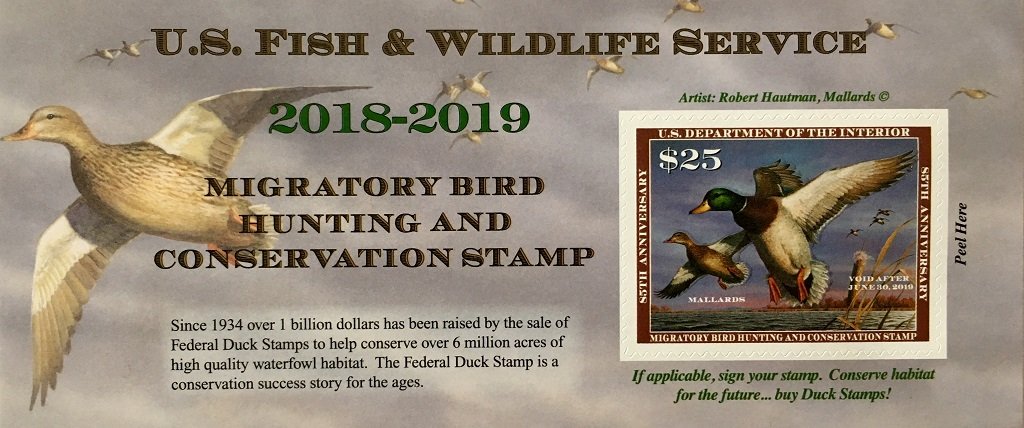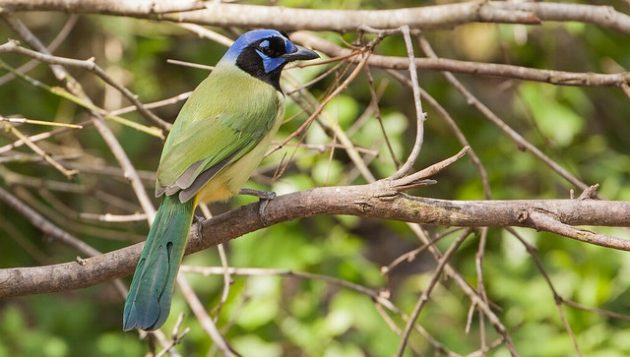
The Trump Administration was a challenging time for conservationists. Other than a sweeping public lands package in 2019 and the Great American Outdoors Act in 2020, there was little or no progress on the conservation or wildlife protection. Indeed, there was considerable cause for alarm.
But a handful of federal conservation programs have permanent and stable funding mechanisms that allow them to operate regardless of who is in the White House. These programs are effectively on auto-pilot. Among them are Federal Duck Stamps and related waterfowl conservation programs.
A Migratory Bird Hunting and Conservation Stamp costs $25 and income from sales goes into the Migratory Bird Conservation Fund (“MBCF”). There are several funding sources for the MBCF, but two predominate: (1) Duck Stamp sales, and (2) import duties on arms and ammunition. In fiscal year 2017, funds available to the MBCF totaled about $87 million. Duck Stamps and import duty contributions were similar, at about $34-38 million each.
Acquisitions made with the MBCF must be approved by the Migratory Bird Conservation Commission (“MBCC”). Membership of the MBCC is set by law: the Secretary of the Interior, the Secretary of Agriculture, the Administrator of the EPA, two U.S. Senators, and two U.S. Representatives.
By tradition, the congressional members are equally divided between Republicans and Democrats. During the Trump Administration, they were: Senators John Boozman (R-Arkansas) and Martin Heinrich (D-New Mexico); and Representatives Rob Wittman, (R-Virginia) and Mike Thompson (D-California).
Thus, Duck Stamp money goes into the MBCF and the MBCC decides how to spend those funds. To date (since 1934), the MBCF has either purchased or obtained conservation easements for approximately 6 million acres of habitat. Those acquisitions include substantial parts of many of the Top 25 NWRs for birding.
In 1989, the MBCC was further tasked with approving projects under the North American Wetlands Conservation Act (NAWCA), which provides federal funds for partnerships to protect and manage wetlands and other habitats for migratory birds and to implement the North American Waterfowl Management Plan. To date, NAWCA has funded over 2,800 projects totaling $1.6 billion and 6,000+ partners have contributed another $3.3 billion in matching funds.
The MBCC meets twice a year, generally in April and September. During the Trump Administration, the MBCC met eight times and its activities are summarized below, with an emphasis on impacts on popular birding locations:
-
- The MBCC convened on April 26, 2017, and approved $17.8 million in NAWCA grants to conserve more than 108,000 acres in 14 states. It also approved $7.8 million from the MBCF to conserve 2,629 acres in four NWRs, including Blackwater NWR in Maryland.
- On September 7, 2017, the Commission approved $21.9 million in grants to conserve 92,000 acres in 16 states. It also approved MBCF funding of $5.4 million to conserve 2,259 acres in six NWRs, including Edwin B. Forsythe NWR in New Jersey and San Bernard NWR in Texas.
- The MCCC met on April 25, 2018, and approved grants totaling $24.6 million to conserve 176,000 acres in 18 states. It also approved $9.8 million from the MBCF to conserve 2,259 acres in two NWRs, including Turnbull NWR in Washington.
- On September 5, 2018, the Commission approved $23.8 million in grants to preserve almost 135,000 acres of habitat for waterfowl and other birds in 17 states. It also approved $13.1 million in MBCF funds to conserve 5,802 acres in six NWRs, again including San Bernard NWR in Texas and Blackwater NWR in Maryland.
- The Commission met on June 19, 2019, and authorized grants of $29.4 million to protect more than 205,000 acres in 22 states. It also approved $15.1 million of MBCF funding to conserve 4,886 acres in five NWRs, including Laguna Atascosa NWR in Texas and San Pablo Bay NWR in California.
- On September 16, 2019, the MBCC approved $23.9 million in grants to conserve 150,000 acres for waterfowl and other birds in 20 states. It also approved $4.2 million from the MBCF to conserve 2,200 acres in Klamath Marsh NWR in Oregon.
- The MBCC convened on May 28, 2020, and approved $22.1 million in grants to conserve 160,000 acres in 15 states. It also authorized $47.1 million from the MBCF to conserve 21,259 acres in six NWRs, including Edwin B. Forsythe NWR in New Jersey, Laguna Atascosa NWR and San Bernard NWR in Texas, and Turnbull NWR in Washington.
- On September 10, 2020, the MBCC approved $33.3 million in NAWCA grants to preserve 157,000 acres in 21 states. It also approved $1 million in MBCF funding to conserve 419 acres in three states, including Silvio O. Conte NWR in Connecticut.
Although the size of any individual project may be relatively modest, the MBCC dutifully approves projects twice a year, each and every year. For example, at all the meetings above, the MBCC approved millions of dollars of MBCF funds to acquire hundreds of acres for NWRs. And each meeting approved NAWCA grants to protect at least 90,000 acres. (For perspective, Santa Ana NWR in Texas is 2,087.50 acres, though it is a relatively small refuge.)
And the acquisitions are not just any land: these projects conserve habitat that has been strategically-selected to benefit migratory birds, typically along the major North American flyways. Moreover, once the land is protected, it is habitat that is permanently saved for the benefit of birds and other wildlife.
Even during the Trump Administration, some program of the federal government still worked to preserve and protect habitat for birds.

This post was originally published on July 9, 2019, and has been updated.
Photos: Green Jay at Laguna Astascosa NWR by U.S. Fish and Wildlife Service Headquarters; Geese at Edwin B. Forsythe NWR with Atlantic City in background by U.S. Fish and Wildlife Service Northeast Region.













Leave a Comment